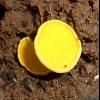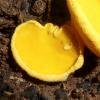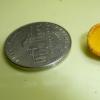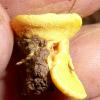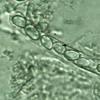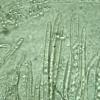
20-12-2025 23:08
Patrice TANCHAUDBonsoir, récolte sur sol sablonneux dans l'arri�

21-12-2025 09:32
Hello.A tiny ascomycete found embedded in wood in

20-12-2025 15:47
Mirek GrycHi.These grew on pine wood that was heavily covere

18-12-2025 21:17
Pol DebaenstThe identification took me to Byssonectria deformi

15-12-2025 07:09
 Danny Newman
Danny Newman
indet. Rutstroemiaceae sp. on unk. fallen leavesMc

19-12-2025 10:10
Patrice TANCHAUDBonjour, récolte réalisée en milieu dunaire, a

18-12-2025 17:23
 Bruno Coué
Bruno Coué
Bonjour,je serais heureux d'avoir votre avis sur c

18-12-2025 18:07
Margot en Geert VullingsThese plumes were found on rotten wood.They strong
A terrestrial Yellow cup fungi from Panama
Esquivel-Rios Eduardo,
16-09-2012 21:01
I found this yellow cup fungi in the soil, humid and dark place, any expert can help in the identification.?
Hans-Otto Baral,
16-09-2012 21:57

Re : A terrestrial Yellow cup fungi from Panama
Sorry, but without spore measurements at least I cannot help. The only idea I have is Discinella terrestris. That species I know very well by microscopy, and it is confined to Eucalyptus.
Zotto
Zotto
Esquivel-Rios Eduardo,
16-09-2012 23:36
Re : A terrestrial Yellow cup fungi from Panama
Not associated to Eucalyptus, the spore measures are 8 - 10 x 5 - 6 microns
Carlo Agnello,
17-09-2012 05:37

Re : A terrestrial Yellow cup fungi from Panama
Maybe Acervus epispartius ?
Raúl Tena Lahoz,
17-09-2012 16:52

Re : A terrestrial Yellow cup fungi from Panama
I agree with Carlo, Acervus epispartius is a good option. Here you have an article from Rocabruna & Tabarés where you can see a pictura and a description of Acervus epispartius: http://publicacions.iec.cat/repository/pdf/00000156/00000081.pdf
But maybe a better option can be Acervus flavidus with spores closer to those you measured: 10,5-12,5 x 6-7,5 (fide Zhuang et al.: http://www.mycobank.org/BioloMICS.aspx?Table=Mycobank&Rec=234968&Fields=All).
Both species are described (as Phaedropezia) by Madame Le Gal in "Les Discomycetes de Madagascar".
Cheers,
Raúl
But maybe a better option can be Acervus flavidus with spores closer to those you measured: 10,5-12,5 x 6-7,5 (fide Zhuang et al.: http://www.mycobank.org/BioloMICS.aspx?Table=Mycobank&Rec=234968&Fields=All).
Both species are described (as Phaedropezia) by Madame Le Gal in "Les Discomycetes de Madagascar".
Cheers,
Raúl

